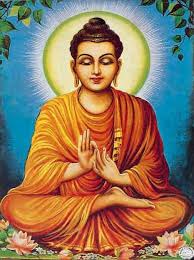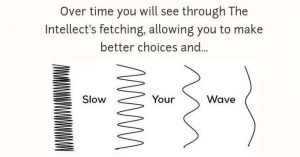
Editor’s note: This feature was first published in the now-retired Bodhi Journal, Issue 4, June 2007.
Introduction
Once, Gotama Buddha recited a recital in brief before a group of disciples thus:
There is one thing, householder, pointed out by that Lord …Fullycankers, not yet completely destroyed , go to complete destruction; and, too, he attains the matchless security from the bonds not yet attained.
The above Dhamma was preached in brief by the Blessed One but was not comprehended by a group of monks. These monks sought the commentary expertise of Ven. ?nanda to explain in detail what had been expounded in brief by the Lord.
12 Levels of Concentration
?nanda explained that basically tranquility-Insight meditation (samatha-vipassan?-bh?van?) can be broadly be categorized into 12 levels of jh?nic experiences or mental concentrations. Beginning from the first level of mental concentration, if a meditator or yogi can realize the impermanence (anicca) of the mental concentration absorption factors (jh?nic factors) associated with anyone of the first eleven levels of mental concentrations, he can attain Nibb?na. In other words, it is not necessary for the yogi to complete the entire process of meditation exercise up to the 12nd level of the mental concentration known as the state of neither Perception nor Non-perception to actualize Nibb?na. The intuitive discernment of impermanence (anicca) can occur in anyone of the first eleven levels of meditation process. It does not occur at the 12nd level where perception and feeling are frozen. It can occur as early as the first level or as late as the final 11st level. Therefore ?nanda expounds that there are eleven doors to Nibb?na in the meditation exercise. In other words, a very profound level of tranquility is not required to realize Nibb?na. Nibb?na can be gained when tranquility and insight are in tandem or when even insight precedes tranquility. The normal occurrence in a normal meditation exercise is that tranquility precedes insight. Nevertheless, it is all contigent on the individual capacity or past kammic root of an individual.
The 12 levels of mental concentration and the corresponding eleven doors to
liberation are enumerated as follows:
1. First level: First basic mundane jh?na
2. Second level: Second basic mundane jh?na
3. Third level: Third basic mundane jh?na
4. 4th level: Fourth basic mundane jh?na
5. 5th level: Development of Loving-kindness (mett?)
6. 6th level: Development of Compassion (karu??)
7. 7th level: Development of Appreciative Joy (mudit?)
8. 8th level: development of Equanimity (upekkh?)
9. 9th level: Sphere of Infinite Space
10. 10th level: Sphere of Infinite Consciousness
11. 11st level: Sphere of Nothingness
12. 12nd level: Sphere of neither Perception nor Non-perception
Eleven Doors to Liberation
It ought to be emphasized again that discernment of impermanence can occur only in the first 11 levels excluding the 12nd level where perception ceases to take place. ?nanda presented two parables or metaphors to drive home his key point. The first parable is the metaphor of the eleven openings to reach the treasure: The treasure seeker can make use of anyone of the eleven openings to reach the destination of the hidden treasure. Every opening leads directly to the destination. This metaphor is meaningful as the hidden treasure is akin to the treasure of Nibb?na.
?nanda delivered another metaphor which is the metaphor of Eleven Doors of Escape: Through anyone of the eleven doors, the victim can escape from the house on fires. The victim can make use of anyone of the eleven doors to escape from the site of calamity. This metaphor is equally captivating as the house on fires is akin tosa??s?ra. Likewise, it can be described that there are eleven pathways to deathlessness. Deathless is Nibb?na.
Conclusion
It is relatively not easy for the lay Buddhists to develop very profound level of concentration (sam?dhi) while they are leading busy secular life. ?nanda’s revelation is very encouraging in the sense that a profound level of mental concentration is not a ‘must’ to develop insight (vipassan?) or wisdom (paññ?). What matters most is that only insight or wisdom can liberate a wordlling as concentration merely suppresses the cankers (?sava-s). Only wisdom can eradicate cankers and annihilates the illusive selfish or egoistic self (att?). It supports the Buddha’s exposition that insight can precede tranquility instead of the normal situation in which tranquility precedes insight. In other words, one can be liberated by insight or wisdom without prior development of deep concentration. This indirectly supports the Chan teaching of sudden or instantaneous enlightenment which may occur suddenly when there is sudden intuitive leap of apprehension of the true nature of all phenomena. Properly conditioned, discernment can take place at any time in any place. Discernment involves the intuitive comprehension of the Four Noble Truths (catt?ri ariya-sacc?ni) and the Three Universal Characteristics (tilakkha?a-s) of existence in term of the natural law of Dependent Co-arising (pa?iccasamupp?da). Thereby, the perceiver of ultimate truth can liberate himself or herself through anyone of the three deliverances: Signless deliverance (animitta-vimutti), desireless deliverance (appa?ihita-vimutti) and emptiness deliverance (suññat?-vimutti). Signless deliverance is liberation due to the insightful penetration into the illusion of signs of all phenomena which are signless in the ultimate sense. The word ‘Desire’ from the word ‘Desireless’ requires careful exegesis. Otherwise, there may be misinterpretation and mispresentation of Gotama Buddha. ‘Desireless’ refers to human Desire devoid of selfish or egoistic self or simply ‘Selfless desire’. Emancipation is actualized with the annihilation of illusive selfish or egoistic self. This is universally applied in all other esoteric religions, such as Taoism, Hinduism or Upani?ads, Christianity and Islam. Emptiness deliverance is liberation attained by the intuitive apprehension of the insubstantiality of self and others or of all phenomena of the multiplicity. Deliverance or liberation is Nibb?na. Nibb?na is self-actualized not to cut off the lay practitioners from society while they are still dwelling in the mundane world on earth. Nibb?na is the total appeasement of human consciousness (viññ??upasama: Sn.V.734 &745). Nibb?na is used to tame the minds of worldlings to construct a harmonious and civil society.











